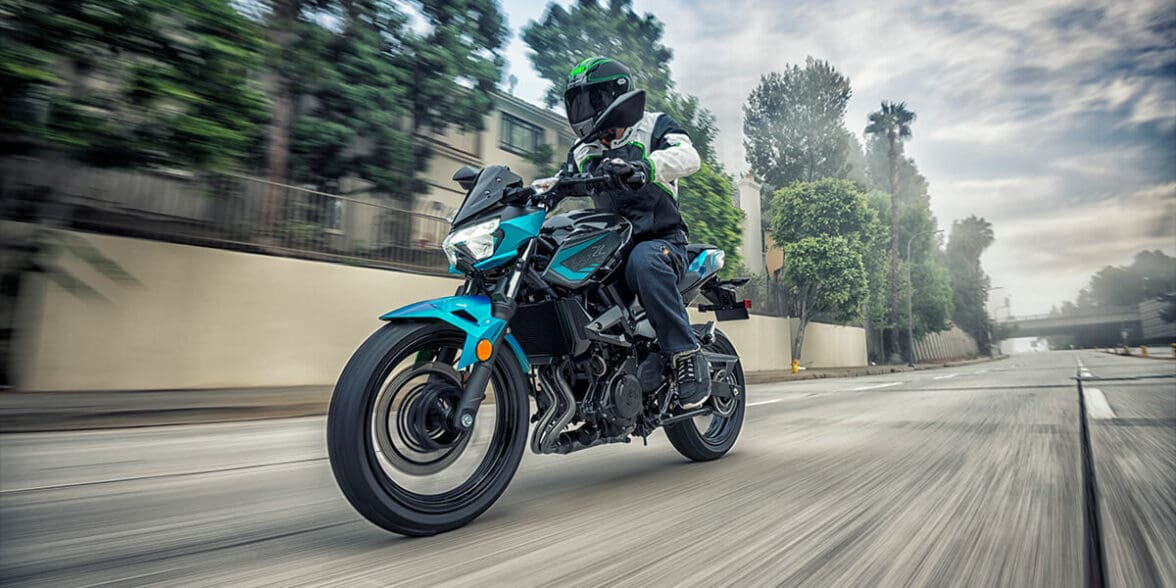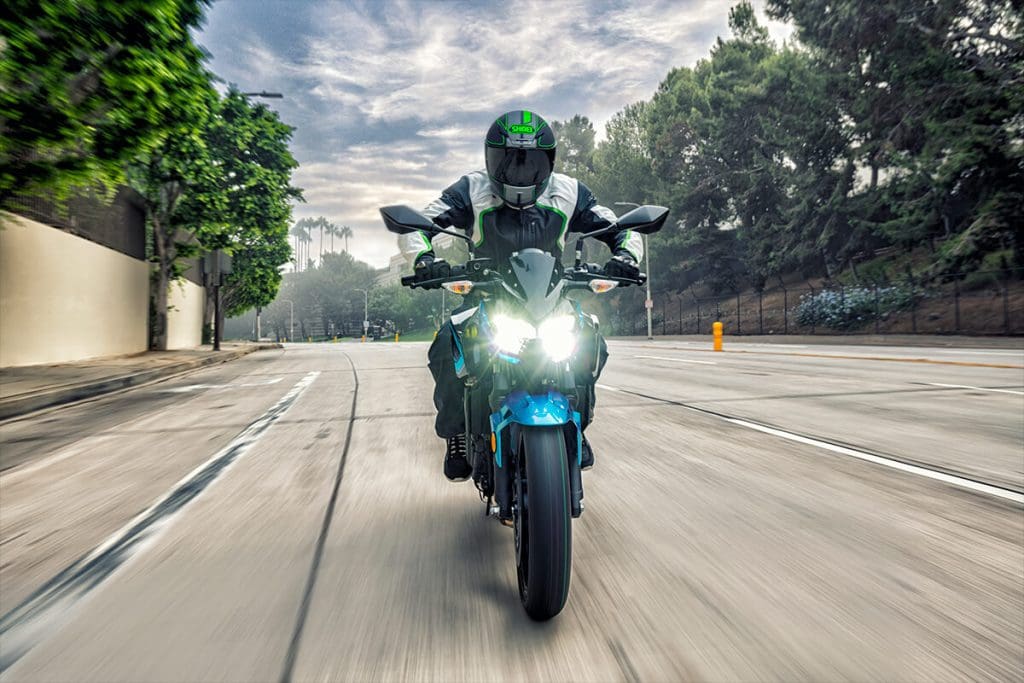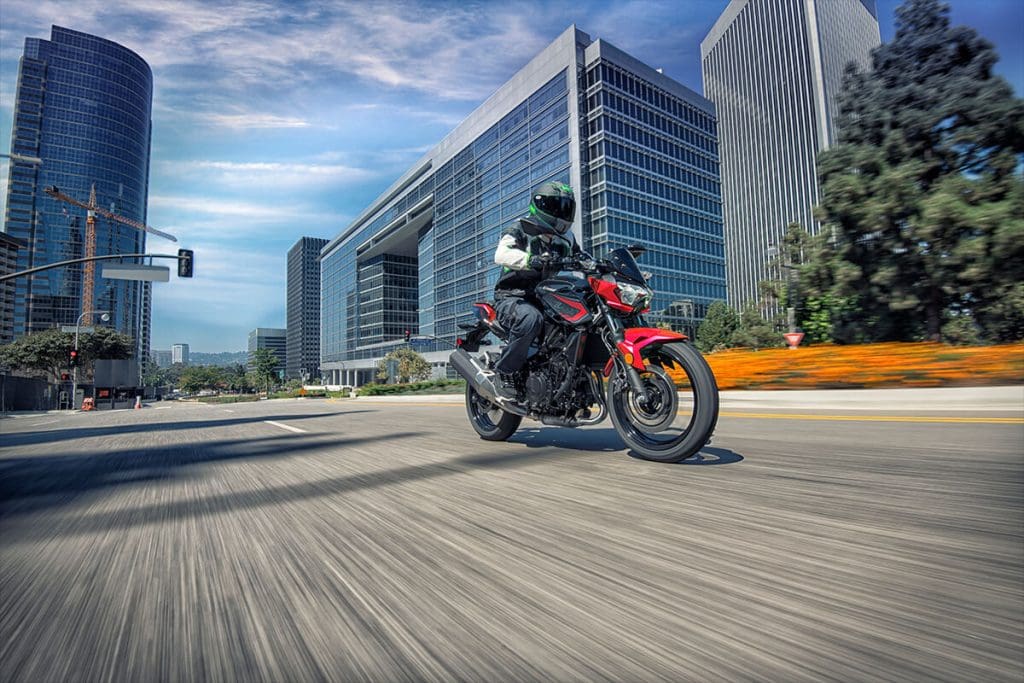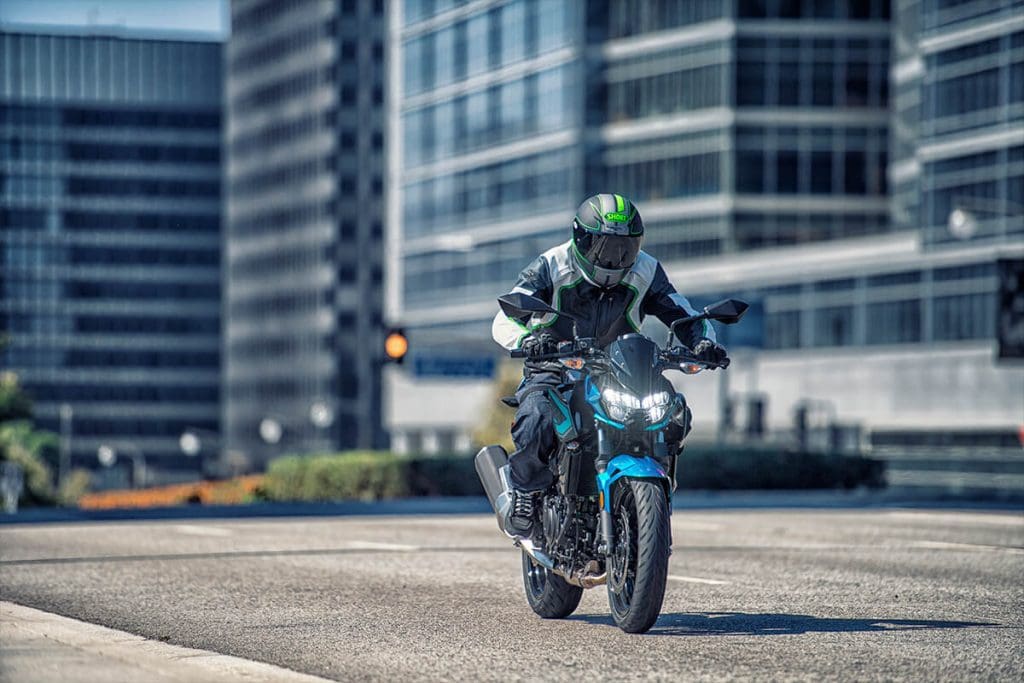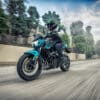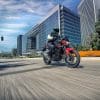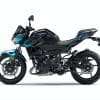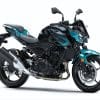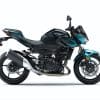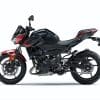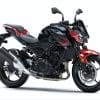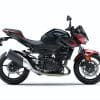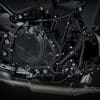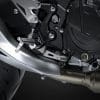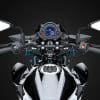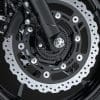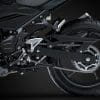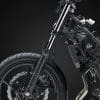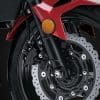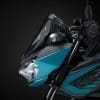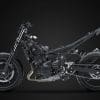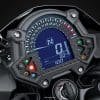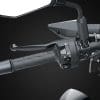The 2021 Kawasaki Z400 ABS: Naked For New Riders
Contents
The 2021 Kawasaki Z400 ABS is Kawasaki’s naked for the new rider. Japanese-made, small, light, and razor-sharp, the 399cc Z400 more lets you feel the wind in your face.
Sharing 98% of its DNA with the Kawasaki Ninja 400, it just required a few small changes to deliver the Z400. Kawasaki thankfully recognized the public was already very happy with their parallel-twin 399cc machines and stayed the course. Ditching the fairing and bodywork does hurt the aerodynamics a bit, causing a fuel economy penalty of about .5 mpg on the highway.
The Z400 has been designed to appeal to the entry-level rider, and that is a role it fills well in the 2021 lineup. The overall Kawasaki design is meant to maintain comfort, and promote the visceral fun of the Naked bike category. With 45 HP on tap, the power is soft off idle which is perfect for those still learning to be smooth on the clutch at stoplights. Midrange grunt is linear and pulls well when asked.
As seat time builds, the quality of the Z400 package will continue to reward good riding. Kawasaki saved money with the non-adjustable suspension but still managed to provide a very solid package. Potholes and road seams don’t cause any disruptive motions, the ride is well-damped and confidence-inspiring.
Colors for 2021 include: Pearl Nightshade Teal / Metallic Spark Black, Candy Cardinal Red/Metallic Flat Spark Black
The 2021 Kawasaki Z400 ABS starts at $4,999 USD / $6,199 CAD.
On this page: we’ve curated specs, features, news, photos/videos, etc. so you can read up on the new 2021 Kawasaki Z400 ABS in one place.
Model Overview
General Info
- Price: $4,999 USD / $6,399 CAD
- Key Features:
-
- ABS Brakes
- Back-torque limiting Slipper clutch
- Assist And Slipper Clutch
- New Lightweight Trellis Frame
Main Specs
- Engine: 399cc, liquid-cooled, 4-stroke, DOHC 8-valve parallel twin
- Power: 33.56 kW (45 hp) @ 10,000 RPM
- Torque: 28.0 lb-ft (38 NM) @ 8,000 RPM
- Wet Weight: 165 kg (364 lb)
- Seat Height: 785 mm (30.9 in)
Competitors
2021 Kawasaki Z400 ABS Specifications
ENGINE |
||
| Engine | 399cc, liquid-cooled, 4-stroke, DOHC 8-valve parallel twin | |
| Power | 45 hp | |
| Bore x Stroke | 70.0 x 51.8mm | |
| Compression Ratio |
9.8:1
|
|
| Fuel System | DFI® with 32mm throttle bodies | |
| Starter | Electric | |
| Lubrication | ||
DRIVETRAIN |
||
| Clutch | ||
| Transmission | 6-speed, return shift | |
| Final Drive | Sealed chain | |
CHASSIS |
||
| Suspension Front | Telescopic fork/4.7 in | |
| Suspension Rear | Uni-Trak® swingarm/5.1 in | |
| Brakes Front | Single 310mm disc, ABS | |
| Brakes Rear |
Single 220mm disc, ABS
|
|
| Tires Front | 110/70-17M/C 54H | |
| Tires Rear | 150/60-17M/C 66H | |
| Fuel Tank Capacity | 3.7 gal | |
| Color |
Pearl Nightshade Teal/Metallic Flat Spark Black, Candy Cardinal Red/Metallic Flat Spark Black
|
|
ELECTRICAL |
||
| Ignition | TCBI with digital advance | |
| Spark Plugs | ||
| Headlight | LED | |
| Tail Light | LED | |
DIMENSIONS |
||
| Overall Length | 78.3 in | |
| Overall Width | 31.5 in | |
| Overall Height | 41.5 in | |
| Wheelbase | 53.9 in | |
| Ground Clearance | 5.7 in | |
| Seat Height | 30.9 in | |
| Curb Weight | 363.8 lb | |
WARRANTY |
||
| Warranty | 12 Month Limited Warranty | |
| Kawasaki Protection Plus | 12 / 24 / 36 / 48 months | |
2021 Kawasaki Z400 ABS Features
Assist & Slipper Clutch
Under normal operation, the assist cam functions as a self-servo mechanism, pulling the clutch hub and operating plate together to compress the clutch plates. This allows the total clutch spring load to be reduced, resulting in a lighter clutch lever feel when operating the clutch.
When excessive engine braking occurs – as a result of quick downshifts (or an accidental downshift) – the slipper cam comes into play, forcing the clutch hub and operating plate apart. This relieves pressure on the clutch plates to reduce back-torque and helps prevent the rear tire from hopping and skidding. This race-style function is particularly useful when sport or track riding.
Economical Riding Indicator
While effective vehicle speed and engine speed may vary by model, paying attention to conditions that cause the “ECO” mark to appear can help riders improve their fuel efficiency – a handy way to increase cruising range. Further, keeping fuel consumption low also helps minimize negative impact on the environment.
ABS (Anti-lock Brake System)
2021 Kawasaki Z400 ABS Photos
2021 Kawasaki Z400 ABS Videos
Links
Kawasaki Official Websites


